Power consumption and loads
At 15.9 watts in the Idle, the power consumption of this card is significantly higher than that of the Founders Edition. For gaming and in the torture loop, the card is available at approx. 277 watts or 279 watts even far above the default power limit specified in the BIOS. If I overclock the card to its physical limit, then it is already a lot of 293 watts, so no more, despite 110% Power Target. But according to BIOS, the limit is already 285 watts. In the end, it is also one of the few cards that are above the Max specified in the BIOS. Power Limit lie, why and anyway.
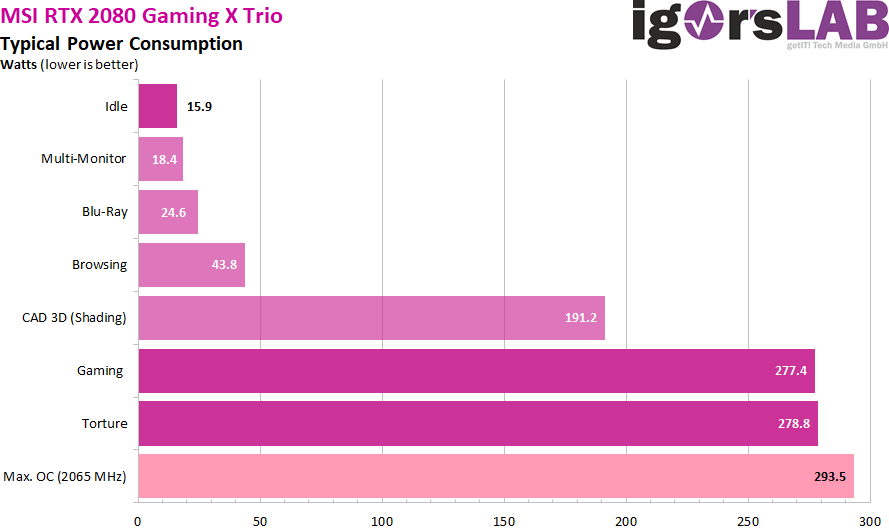
Here is a short excerpt from what MSI actually gave this card in the firmware of limits:
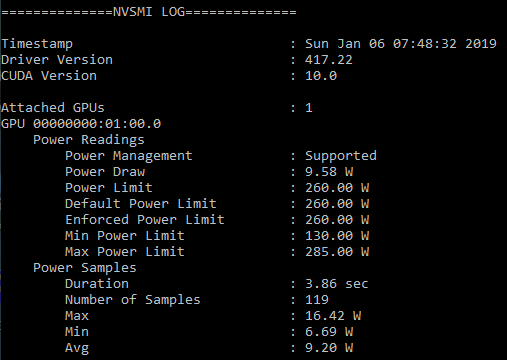
The voltages are in the expected range, with the oc's permissible board power being the limiting factor, not the voltage. One notices very clearly that Nvidia deliberately limits here before a possible maximum is reached.
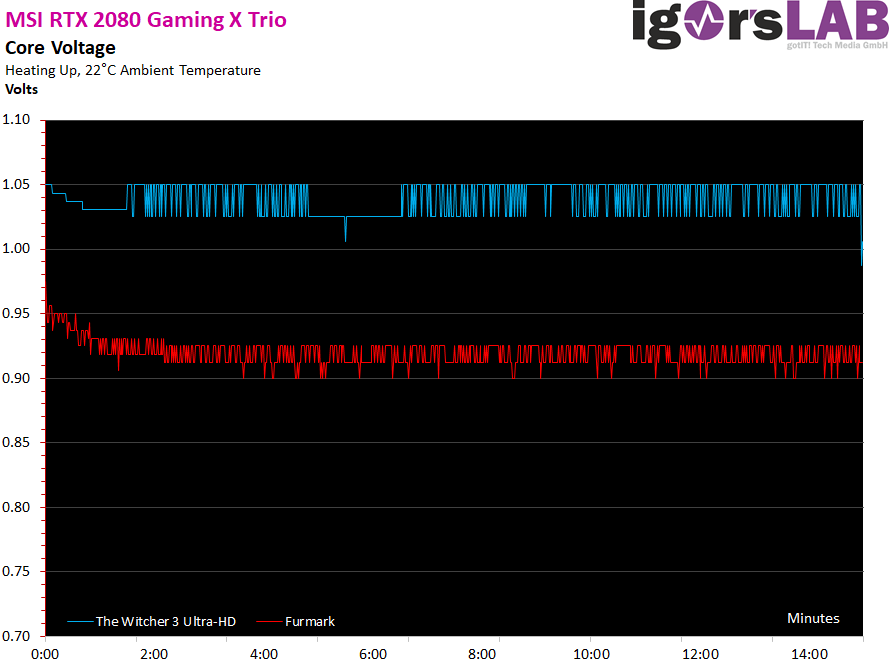
The load distribution on the rails is good, because the maximum 5.5 amperes of the motherboard slot are never exceeded. Even with the external power supply connections, it remains well below 300 watts.
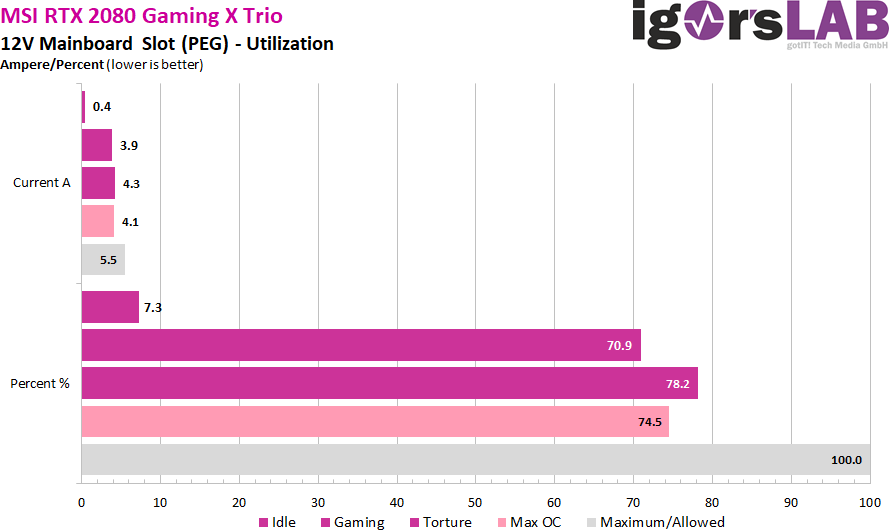
Power supply design and peak loads/currents
As I have already demonstrated in detail in my basic article "The fight of graphics card against power supply – power consumption and load peaks demystified", there are also temporarily higher loads in the millisecond range, which are unfavorable in case of unfavorable designed or improperly equipped power supplies can already lead to unexplained shutdowns. The TBP (Typical Board Power) measured by the graphics card manufacturer or the reviewers does not really help for a stable design of the system.
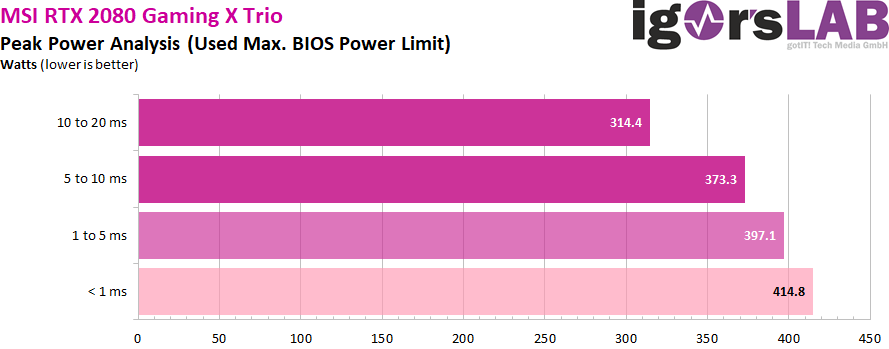
Peaks with intervals between 1 and 10 ms can lead to shutdowns with very fast-reacting protective circuits (OPP, OCP), especially for multi-rail power supplies, although the average power consumption is still in the norm. For the MSI RTX 2080 Gaming X Trio I would therefore calculate with 350 to 400 watts to have enough reserves in case of cases. A short excerpt with high resolution now show us the 20 ms intervals, how I run them automatically for valuation:
Detailed recording of average power consumption and flowing currents
As usual, I now also set aside the power consumption and the flowing currents as detailed graphics of my oscillograph measurements. A service that hardly anyone else offers and which shows how the maps "tick" in detail:












































Kommentieren